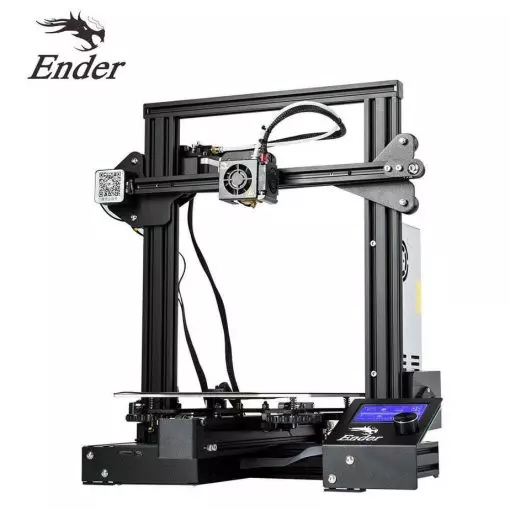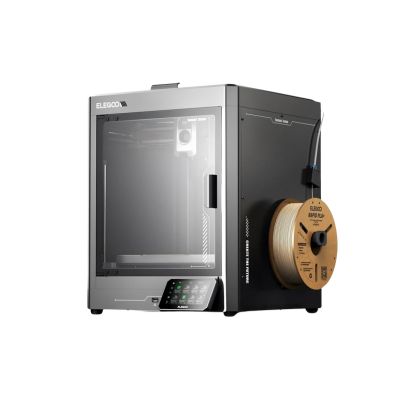Compare Ender 3 vs Centauri Carbon
Comparison between the best 3D printers
Choose the best 3D printer at the best price. The cheapest 3D printers are here.
Buy a 3D printer here with 3D Fila.
 |
 |
|
| Model | Ender 3[BUY Ender 3] |
Centauri Carbon |
| Printing Material | Filament | Filament |
| Buy Filament for Creality 3D Ender 3 | Buy Filament forElegoo Centauri Carbon | |
| Estimated price | $210,00 | $500,00 |
| Manufacturer | Creality 3D | Elegoo |
| Release Year | 2018 | 2025 |
| Print Volume [mm] | 220x220x250 | 256x256x256 |
| Printer Size [mm] | 440x440x465 | 500x500x600 |
| Weight [kg] | 6,62 | 17,5 |
| Power Loss Recovery | NO | YES |
| Enclosed printer | NO | YES |
| Bed Leveling | Manual | Automatic |
| Filament End Sensor | NO | YES |
| Bed type | Heated | Heated |
| Power supply system | Bowden | Direct Drive |
| Standard nozzle | 0,4 | 0,4 |
| Maximum Nozzle Temperature [°C] | 255 | 300 |
| Maximum Bed Temperature [°C] | 110 | 110 |
| Maximum printing speed [mm/s] | 180 | 500 |
| Filament holder | YES | YES |
| Camera for supervision | NO | NO |
| Recommended filaments | PLA, TPU, ABS, PETG | PLA, PETG, ABS, ASA, TPU, NYLON, CARBON FIBER |
| Recommended slicers | Cura, Simplify, Slic3r | Elegoo Slicer, Orca Slicer |
| Maximum Resolution [mm] | 0,1 | 0,1 |
| Processor | 8 bits | |
| Display | Mono | Touchscreen 4,3'' |
| Power Supply | 24V / 270W | 350 W |
| Connectivity | SD / USB | WiFi, SD, USB |
| Operating systems | Windows, Mac, Linux | Windows, Linux e Macbook |
| Date of registration in the system | 2021-04-13 | 2025-02-10 |
| Release date | 2018 | 2025 |
| Extra features | The Ender 3 V1 is a DIY assembly 3D printer, a sales leader since 2017, standing out for its cost-benefit. With a wide printing capacity, it has a CNC machined structure for precision and stability. It offers high-precision prints with low noise, thanks to its innovative V-profile and pulleys. It has a self-adhesive magnetic platform for easy removal of models and excellent adhesion. The Ender 3 heats up quickly, reaching 100°C in 5 minutes, ideal for agile prints. It includes protection against power failures, allowing you to resume printing after interruptions, saving time and material. | The Elegoo Centauri Carbon is a CoreXY 3D printer with an enclosed structure, direct drive extruder, and hardened steel components for abrasive materials. It features automatic bed leveling, a touchscreen, a filament cutting system, and an elongated nozzle designed to reduce clogs. It offers Wi-Fi connectivity for remote file transfer and runs on a Klipper-based firmware, providing advanced control and precise adjustments. |
| Support for multiple colors and materials (AMS and CFS) | NO | NO |
Notes * |
||
| Cost-benefit | 6 / 10 | 8 / 10 |
| Hardware | 0.5 / 10 | 6 / 10 |
| Tela | . | . |
| Print volume | 3 / 10 | 4 / 10 |
| Performance | 1 / 10 | 4 / 10 |
| [BUY Ender 3] |
Conclusion |
| In comparing the Creality 3D Ender 3 and the Elegoo Centauri Carbon, it's clear that each printer caters to different user needs and preferences, ultimately influencing their value at varying price points. The Ender 3 is a cost-effective option that appeals to beginners and those who prioritize affordability. It offers a decent print volume and a heated bed, making it versatile for common materials like PLA, TPU, and ABS. The printer's manual bed leveling may require more user intervention, but its robust DIY assembly and proven track record make it a popular choice in the 3D printing community. However, it lacks advanced features like power loss recovery and an enclosed structure, which could limit usability for some applications. On the other hand, the Elegoo Centauri Carbon represents a significant upgrade with its higher print volume, enclosed design, and automatic bed leveling, which simplifies the setup process and enhances accuracy. Its direct drive system and compatibility with a wider range of materials, including carbon fiber and nylon, highlight its suitability for more demanding 3D printing projects. The built-in Wi-Fi connectivity and touchscreen interface further enhance user experience, appealing to those who value modern features and convenience. While the Ender 3 offers a strong cost-benefit ratio, the Centauri Carbon justifies its higher price through advanced capabilities and greater versatility. Ultimately, the choice between these two printers should align with the user's specific needs—whether they prioritize a budget-friendly machine for basic projects or a feature-rich printer for professional applications. |

